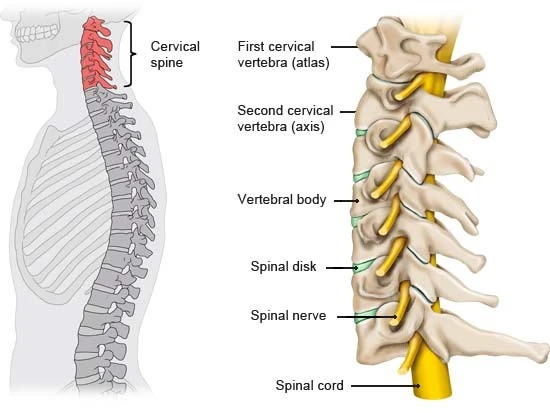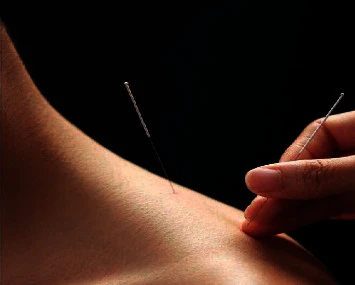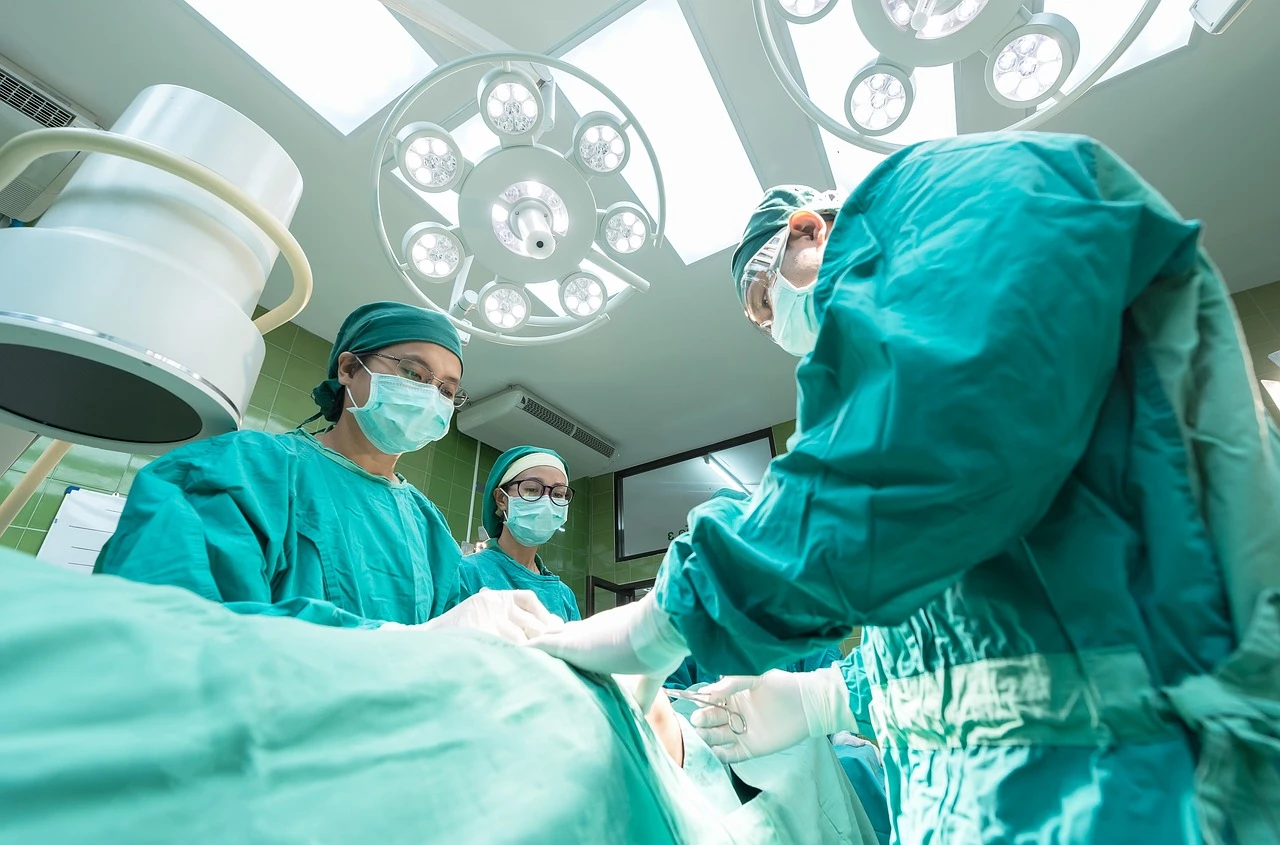This post may contain affiliate links and ads in which we may earn a small percentage of purchases.
Sections
Neck pain is a common ailment seen clinically for patients worldwide. Studies estimate that neck pain is prevalent in about 10% to 30% of the adult population, making it one of the leading causes of disability globally.1 In this article, we will explore the role of Acupuncture after neck surgery and benefits.

If you’ve ever quit because meal plans felt overwhelming, this approach keeps it simple. The 21-Day Smoothie Diet gives you daily guidance, a detox reset, and easy recipes—so you can focus on consistency instead of planning. Instant digital access. Start today.
Understanding Cervical Anatomy
The cervical spine consists of seven vertebrae, labeled C1 through C72.
Vertebral Column Diagram

It consists of a body along with an outward posterior protrusion known as a spinous process (The bony part that sticks out the back of the neck that we can feel), as well as other stabilizing structures known as lamina, facets, and other anatomical structures.
Cervical Vertebrae Diagram

However, there are eight cervical nerves, numbered C1 through C8, due to the way the nerves exit the spinal column. These nerves play crucial roles in motor and sensory functions of the upper body, influencing grip strength, touch sensation, and overall arm and shoulder strength. Understanding the mapping of these nerves (dermatomes) is vital for effective treatment.
Portable dual-channel TENS/EMS device with 24 therapy modes for targeted muscle and pain relief.
 View Device
View Device
A clear and beginner-friendly guide covering over 400 acupuncture points, ideal for students and learners.
 View Book
View Book

Current Conventional Therapies For Neck Pain
Current conventional treatments for neck pain that are non-surgical may include but are not limited to the following:4,5
- Over-the-counter (OTC) or prescription medications
- Home exercises and physical therapy
- Ice and heat therapy
- Steroid injections (corticosteriods)
- Short-term immobilization
Conditions That May Lead To Neck Surgery
Neck surgery is typically considered a last resort if conservative treatments fail to alleviate chronic neck pain. Some conditions that may require surgical intervention of the neck include, but are not limited to:6,7
Acute disc herniation
Broken Neck
Chronic disc herniation or degenerative disc disease
Myelopathy(Injury to spinal cord)
Infection
Radiculopathy (problem that travels down the arm)
Spinal compression
Tumor
Types of Neck Surgeries
This is a list of common surgeries performed, and is for educational and illustration purposes only. Any medical decisions or discussions about surgery must be decided between you and your physician. Common types of neck surgeries include8:
Cervical Spinal Fusion
Cervical fusion surgery, which involves fusing two or more vertebrae in the neck, can be an intensive procedure with a lengthy recovery period. This can help stabilize the spine and reduce pain. In my experience patients may experience lingering symptoms for months or even years after the surgery. These symptoms often include neck pain, loss of sensation along the arms, hands, and fingers, paresthesia (numbness and tingling), and limited cervical range of motion in rotation, lateral flexion, forward flexion, and extension. Acupuncture can play a positive role in reducing pain, improving recovery time and overall decreasing the physical and financial burden on all parties involved.
Anterior Cervical Diskectomy and Fusion (ACDF)
ACDF involves removing a damaged disk from the neck through an incision in the front of the neck. After the disk is removed, the space between the vertebrae is filled with a bone graft or synthetic material, which will eventually fuse the vertebrae together, providing stability and pain relief.
Laminectomy
Laminectomy is a surgical procedure that involves removing a portion of the vertebral bone called the lamina. This procedure is often performed to relieve pressure on the spinal cord or nerves caused by spinal stenosis or other conditions.
Laminoplasty
Laminoplasty is a technique used to relieve spinal cord compression in the neck while preserving motion. It involves creating a hinge on one side of the vertebra and then opening the spine like a door to relieve pressure, rather than removing bone as in a laminectomy.
Artificial Disk Replacement (ADR)
Artificial disk replacement involves removing a damaged cervical disk and replacing it with an artificial one. This procedure aims to maintain more natural movement in the neck compared to fusion surgeries, potentially leading to better long-term outcomes.
Acupuncture After Neck Surgery: The Road To Recovery

Clinical Experience and Approach
With over ten years of experience in treating workers’ compensation and personal injury cases, I have seen a wide range of neck injuries, including those requiring cervical fusion. One effective approach is to use acupuncture points that influence the neck indirectly, thereby avoiding direct manipulation of the surgical area.
The Role of Acupuncture postoperative Cervical Fusion
Acupuncture can offer significant benefits for patients recovering from cervical fusion surgery. One key aspect of acupuncture is its adaptability; patients can receive treatment in various positions such as lying prone, on their side, face up, or even sitting. This flexibility helps ensure the patient remains comfortable and not in pain during treatment, which is crucial for effective healing.
Pain Reduction and Improved Range of Motion
One of the primary goals of acupuncture in this context is to reduce pain and improve the range of motion. By focusing on improving physiological and anatomical function, acupuncture can lead to reduced pain and enhanced quality of life. For example, improving neck mobility can make everyday activities, such as driving, safer and more comfortable.
Treating the Neck Indirectly
A significant advantage of acupuncture is the ability to treat the neck without directly disturbing the surgical site. This is particularly important for patients and physicians concerned about causing further damage or disturbing the surgical hardware. Acupuncturists can work on related areas such as the rhomboids, lower and mid trapezius, occipital frontalis, and other muscles surrounding the neck without directly touching the affected area.
Use of Electro-Acupuncture
Electro-acupuncture can be a powerful tool in this treatment plan. It involves applying a small electric current to the acupuncture needles, which can enhance the effects of the treatment. However, it’s important to adjust the intensity based on the patient’s tolerance and response. Starting with a low setting and gradually increasing it can help ensure patient comfort and maximize therapeutic benefits.
Patient-Centered Care
A patient-centered approach is essential. Ensuring the patient is in a relaxed state during treatment can improve outcomes. While there may not be extensive research to back this yet, clinical experience suggests that a calm and comfortable patient is more likely to respond positively to treatment.
My Experience with Acupuncture for Neck Surgery Patients
Having worked in the workers’ compensation arena for over ten years, I have treated numerous patients with both personal and work-related injuries. These patients often just want to do the best they can to recover and return to their normal lives. I’ve seen firsthand how acupuncture can be a vital part of their healing process.
One of the first steps in treating someone who has had cervical fusion is to focus on reducing their pain scale. Next, we work on improving their range of motion. If you can improve a patient’s physiological function and anatomical structure, it often leads to reduced pain and better treatment outcomes. For example, if a patient with a stiff neck can regain their ability to turn their head while driving, it significantly improves their quality of life and safety.
Treating Without Direct Contact
One of the biggest concerns for patients and physicians is disturbing the surgical site. Acupuncture allows for effective treatment without direct manipulation of the neck. For instance, I avoid applying direct pressure to the surgical area. Instead, I focus on areas such as the rhomboids, lower and mid trapezius, and occipital frontalis to achieve therapeutic effects without risking harm to the patient. Acupuncture points such as GB20 (GallBladder 20) can be utilized to provide pain relief and decrease muscle tension upon the occipital base and supporting neck muscles.
The Broader Benefits of Acupuncture
Acupuncture’s benefits extend beyond pain relief and improved mobility. By addressing the root causes of discomfort and dysfunction, acupuncture can support overall health and wellness. This holistic approach can help patients recover more fully from cervical fusion surgery, not just by alleviating symptoms but by promoting general well-being.
Acupuncture for Various Post-Surgery Symptoms
Patients often experience a range of symptoms post-surgery, including stiffness, swelling, and muscle spasms. Acupuncture can effectively address these issues by promoting circulation, reducing inflammation, and calming the nervous system. These effects contribute to a smoother and faster recovery process.
Integrating Acupuncture with Other Therapies
Integrating acupuncture with other therapies such as physical therapy, massage, and chiropractic care can enhance overall treatment outcomes. This integrative approach allows for a comprehensive treatment plan that addresses multiple aspects of recovery, providing a more robust support system for the patient.
Herbal Formulas
I recently wrote an article on herbal prescription from a Traditional Chinese Medicine perspective. A comprehensive approach from my clinical experience is best, and TCM formulas such as Ge Gen Pian/Wan are very beneficial for loosening stiff necks, improving range of motion, and possibly helping to alleviate compression.
Research of Acupuncture Postoperative Neck Surgery
Acupuncture Postsurgical Neck Dissection
In a 2010 study published in the Journal of Clinical Oncology, 58 patients were randomly assigned to either receive acupuncture or usual care after neck dissection. The acupuncture group showed greater improvements in shoulder function and reduced dry mouth symptoms compared to the control group9. These findings suggest that acupuncture can significantly reduce pain, improve function, and alleviate dry mouth in patients recovering from neck surgery. More research is needed to confirm these results, but the data supports acupuncture as a beneficial post-surgery treatment.
Acupuncture For Prevention and Pain Management
A 2019 study published in Sage Journals analyzed data from Korean patients with neck pain and found that those who received acupuncture had a significantly lower risk of needing neck surgery compared to those who did not receive acupuncture.10 The study looked at over 50,171 patients who received acupuncture and 128,556 did not. Researchers followed patients over two years and found consistent results across different age, gender, and income groups. These findings suggest that acupuncture could be an effective way to manage neck pain and reduce the need for surgery.
Abdominal Acupuncture For Neck Pain
The results of this 2017 study indicated improvement in neck pain disability and pain relief in both the abdominal acupuncture and sham groups, with abdominal acupuncture being more efficacious than sham abdominal acupuncture.11
Precautions and Safety
When treating patients postoperative and especially post cervical fusion, certain precautions are necessary. They are not complete, but at least can provide you with an idea on how I approached treating patients in the clinic, as well as providing a basic guideline for clinicians, clinics, or hospitals to model.
- Avoid Direct Manipulation: Do not apply direct pressure or manipulation to the surgical site.
- Work with an Experienced Practitioner: Ensure that the practitioner is knowledgeable about post-surgical care and understands the specific needs of patients with cervical fusion.
- Monitor Patient Response: Continuously monitor the patient’s response to treatment and adjust techniques as needed to ensure safety and efficacy.
To Summarize
When it comes to neck pain, healthcare have a variety of options in treating the pathology. Surgical intervention is used when it is the best option for the patient. Acupuncture can be a valuable addition to the recovery process for patients with postoperative cervical recovery. By focusing on pain reduction, improving range of motion, and employing techniques that avoid direct manipulation of the surgical area, acupuncture can help enhance overall quality of life. With the right approach and careful consideration of patient needs, acupuncture offers an integrative path to optimal recovery.
- Kaiser JT, Reddy V, Launico MV, et al. Anatomy, Head and Neck: Cervical Vertebrae. [Updated 2023 Oct 24]. In: StatPearls [Internet]. Treasure Island (FL): StatPearls Publishing; 2024 Jan-. Available from: https://www.ncbi.nlm.nih.gov/books/NBK539734/ ↩︎
- Pencle F, Mesfin FB. Cervical Disc Injuries. [Updated 2023 Jul 10]. In: StatPearls [Internet]. Treasure Island (FL): StatPearls Publishing; 2024 Jan-. Available from: https://www.ncbi.nlm.nih.gov/books/NBK441971/ ↩︎
- InformedHealth.org [Internet]. Cologne, Germany: Institute for Quality and Efficiency in Health Care (IQWiG); 2006-. Overview: Neck pain. [Updated 2022 Dec 12]. Available from: https://www.ncbi.nlm.nih.gov/books/NBK338120/ ↩︎
- Seladi-Schulman, J. (2019). What You Need to Know About Neck Surgery. Retrieved July 4th, 2024 from https://www.healthline.com/health/neck-surgery ↩︎
- Pencle F, Mesfin FB. Cervical Disc Injuries. [Updated 2023 Jul 10]. In: StatPearls [Internet]. Treasure Island (FL): StatPearls Publishing; 2024 Jan-. Available from: https://www.ncbi.nlm.nih.gov/books/NBK441971/ ↩︎
- Pencle F, Mesfin FB. Cervical Disc Injuries. [Updated 2023 Jul 10]. In: StatPearls [Internet]. Treasure Island (FL): StatPearls Publishing; 2024 Jan-. Available from: https://www.ncbi.nlm.nih.gov/books/NBK441971/ ↩︎
- Cheung JP, Luk KD. Complications of Anterior and Posterior Cervical Spine Surgery. Asian Spine J. 2016 Apr;10(2):385-400. doi: 10.4184/asj.2016.10.2.385. Epub 2016 Apr 15. PMID: 27114784; PMCID: PMC4843080. ↩︎
- Cheung, J. P., & Luk, K. D. (2016). Complications of Anterior and Posterior Cervical Spine Surgery. Asian spine journal, 10(2), 385–400. https://doi.org/10.4184/asj.2016.10.2.385 ↩︎
- Pfister DG, Cassileth BR, Deng GE, et al. Acupuncture for pain and dysfunction after neck dissection: results of a randomized controlled trial. J Clin Oncol. 2010;28(15):2565-2570. doi:10.1200/JCO.2009.26.9860 ↩︎
- Han, D., Koh, W., Shin, J.-S., et al. (2019). Cervical surgery rate in neck pain patients with and without acupuncture treatment: A retrospective cohort study. Acupuncture in Medicine, 37(5), 268-276. https://doi.org/10.1136/acupmed-2018-011724 ↩︎
- Ho, L. F., Lin, Z. X., Leung, A. W. N., Chen, L., Zhang, H., Ng, B. F. L., Ziea, E. T. C., & Guo, Y. (2017). Efficacy of abdominal acupuncture for neck pain: A randomized controlled trial. PLOS ONE, 12(7), e0181360. https://doi.org/10.1371/journal.pone.0181360 ↩︎
Medical Disclaimer: This article is for informational and educational purposes only and is not a substitute for professional medical advice, diagnosis, or treatment. Always consult a qualified healthcare provider with any questions about a medical condition or treatment.




